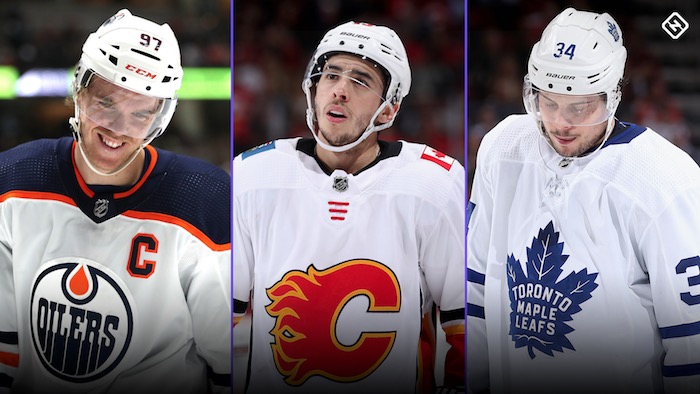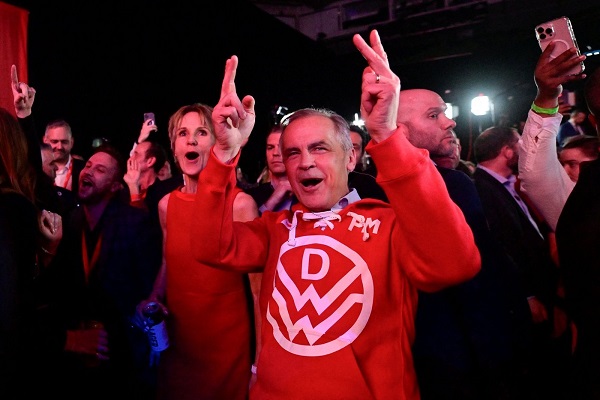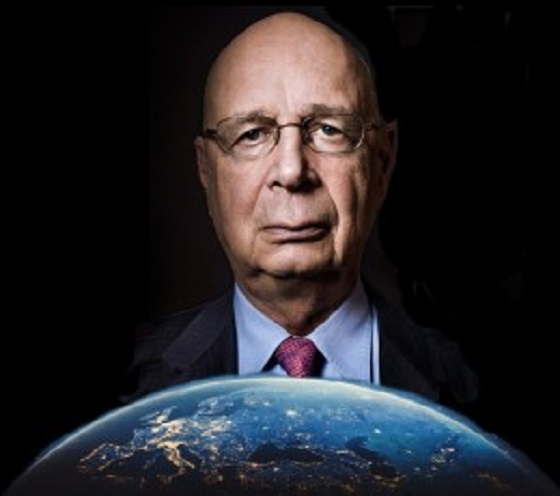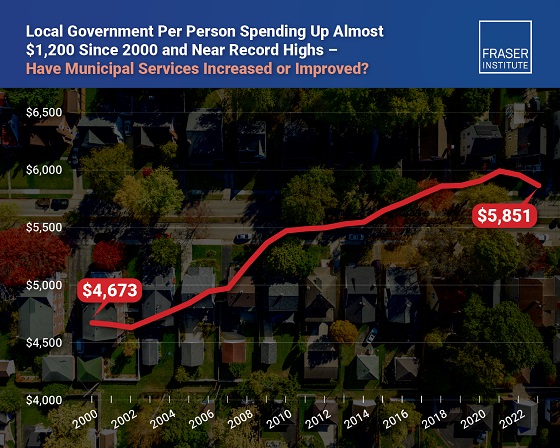Bruce Dowbiggin
Connor, Johnny, Auston: You’ve Got To Have Hart

Among the slimmest volumes of the past 30 years is Great Canadian NHL Champions. As most suffering fans of the seven Canadian-based NHL teams know, no Canadian club has won a Stanley Cup since 1993.
Just five teams have even gotten to the Final: Vancouver (1994/ 2011), Calgary (2004), Ottawa (2006), Edmonton (2007) and Montreal (2021). They all lost. (You can make a point that the transplanted Quebec Nordiques won the Cup in Colorado in 1996 and 2001, but it’s a lame argument.)
As the 2022 postseason begins, however, there are two bonafide contenders— Toronto/ Calgary— to win the Cup and a third— Edmonton— with a puncher’s chance. Of course. these dreams can collapse for any number of reasons. In 2004 and 2011, the Flames and Canucks simply ran out of healthy bodies. As we wrote in an earlier column, goaltending can also trip up a team.
What’s just as interesting as the Canadian Cup chase will be the contest for the Hart Trophy as the most valuable player to his team. In the years since Patrick Roy led the Habs to the 1993 championship, going 10-0 in OT games, there has not been a year with a trio of Canadian-based players like this.
Toronto’s Auston Matthews. Edmonton’s Connor McDavid. Calgary’s Johnny Gaudreau.. (Ironically two of three are Americans on Canadian teams.) They’re key reasons why their teams have a chance at the Cup.
The Toronto media has— surprise— already anointed Maple Leafs captain Matthews as the putative winner. And Lord knows what the Toronto media decides instantly becomes gospel. Matthews has no doubt had a remarkable year, and deserves a lot of credit. Bookies love him too at an inflated -345.
Besides being the star of the team in the largest Canadian market, Matthews’ claim rests largely on being the top goal scorer in the NHL. His 58 goals in 71 games (all totals through 25/04) are just three more than his nearest competitor (Leon Draisaitl). He did manage a historic 51 of his goals in a 50-game span. But pure goal scoring is the only significant stat in which Matthews leads: his nine game-winning goals trail Draisaitl by two. And his 15 power-play goals trail Draisaitl by nine.
Matthews also trails McDavid, the NHL’s leading scorer, by 14 points, albeit with six fewer games played. Gaudreau leads him overall by 11 points. Gaudreau, meanwhile, currently sits third in league scoring behind McDavid and Florida’s Jonathan Huberdeau; he stakes his claim to the Hart based on some extraordinary plus/ minus statistics. With three games to play Gaudreau is a stunning plus-61; only his linemate Matthew Tkachuk is even remotely close at plus-55. McDavid is plus-27. Matthews an ordinary plus-18.
He not only scored but his line kept opponents from scoring. Okay, generic plus/ minus can be overrated. But there is real value in Gaudreau’s leading his challengers with 86 even-strength points. (This from a player Flames fans wanted traded a year ago). McDavid and Matthews are tied at 76.

While Matthews’ has 15 PPG, McDavid’s has 9 PPG followed by Gaudreau has a modest 6 PPG. Gaudreau has managed these numbers while playing less than his rivals. His ice time is just 18:28. Matthews logs 20:33. McDavid plays a whopping 22:08 per game.

McDavid may have been the best player in the NHL the past half-decade (he’s won two Harts already), but his team has held him back come playoff time. This year he and Draisaitl have grabbed the underachieving Oilers by the scruff and made a late surge to a playoff spot.
All three could end up watching Huberdeau, a Canadian playing on an American team, carry off the Hart— especially if Canadian voters split the vote. The Florida Panthers star is second in scoring and leads the league in assists and may be the best playmaker on the runaway Eastern Conference leaders.
Who to bet on? Matthews is the favourite at -345 to win his first Hart Trophy. At +400, two-time winner Connor McDavid is the second favourite. Gaudreau is closing the gap, now at +1600. Remember that voting is due before the playoffs, so a bad postseason cannot hurt a Hart contender nor can it help a dark horse. Our vote in a narrow contest goes to Gaudreau.
**************************************
The sad passing of Guy Lafleur this week brought forth many memories of his greatness as a player. But as we noted in Inexact Science (brucedowbigginbooks.com) The Flower was considered something of a bust in his first few NHL seasons. After scoring “just” 27 goals in his rookie year, he was overshadowed by No.2 selection Marcel Dionne and No. 5 pick Rick Martin.
(He) may have had one more tally and just seven fewer points than Dionne, but it was the perception that mattered also. And the perception was that Lafleur didn’t match up to his draft “adversary.” Making matters worse was that Buffalo’s number five overall pick, Rick Martin, achieved the heights Lafleur supposedly should have reached in 1971–72 by amassing an NHL rookie record 44 goals—still tied today as the seventh-highest such total in league history… Even though he was the odds-on favourite for Rookie of the Year when training camp had rolled around, Lafleur wasn’t even a finalist for the award. The dashing of these rather lofty expectations naturally begat skepticism of Lafleur’s greatness.
To the exasperation of Habs fans, Lafleur’s closest peers continued to outdo him in every way but in championship rings. Dionne avoided any sophomore jinx by posting 90 and 78 points in the next two campaigns, compared to Lafleur’s 56 and 55, while Martin reeled off 37- and 52-goal campaigns to show his freshman output had been no beginner’s luck. To add insult, even the number 10 pick of 1971, Steve Vickers—debuting for the Rangers in 1972—reeled off back-to-back 30-goal seasons to start off his career. When Lafleur bottomed out with only 21 goals in his third NHL season, 1973–74, there were whispers that maybe he was just a fluke, a flash-in-the-pan who peaked too early, spoiled by the weaker defences of the junior game and perhaps too mentally fragile to handle the immense pressure of being the next supposed legend in Canadiens lore.
The next year Lafleur ditched his tea-pot helmet and embarked on a brilliant career with three Art Ross scoring titles, three Hart Trophies, three Pearson Awards and one Conn Smythe—but he also shared in team success by winning five Stanley Cups and four Prince of Wales Trophies. Adieu, Guy
Bruce Dowbiggin @dowbboy is the editor of Not The Public Broadcaster (http://www.notthepublicbroadcaster.com). The best-selling author was nominated for the BBN Business Book award of 2020 for Personal Account with Tony Comper. A two-time winner of the Gemini Award as Canada’s top television sports broadcaster, he’s also a regular contributor to Sirius XM Canada Talks Ch. 167. His new book with his son Evan Inexact Science: The Six Most Compelling Draft Years In NHL History is now available on http://brucedowbigginbooks.ca/book-personalaccount.aspx
Bruce Dowbiggin
The Game That Let Canadians Forgive The Liberals — Again

With the Americans winning the first game 3-1, a sense of panic crept over Canada as it headed to Game 2 in Boston. Losing a political battle with Trump was bad enough, but losing hockey bragging rights heading into a federal election was catastrophic for the Family Compact.
“It’s also more political than the (1972) Summit Series was, because Canada’s existence wasn’t on the line then, and it may be now. You’re damn right Canadians should boo the (U.S.) anthem.” Toronto Star columnist Bruce Arthur before Gm. 1 of USA/ Canada in The 4 Nations Cup.
The year 2025 is barely half over on Canada Day. There is much to go before we start assembling Best Of Lists for the year. But as Palestinian flags duel with the Maple Leaf for prominence on the 158th anniversary of Canada’s becoming a sovereign country it’s a fair guess that we will settle on Febuary 21 as the pivotal date of the year— and Canada’s destiny as well.
That was the date of Game 2 in the U.S./Canada rivalry at the Four Nations Tournament. Ostensibly created by the NHL to replace the moribund All Star format, the showdown of hockey nations in Boston became much more. Jolted by non-sports factors it became a pivotal moment in modern Canadian history.
Set against U.S. president Donald Trump’s bellicose talk of Canada as a U.S. state and the Mike Myers/ Mark Carney Elbows Up ad campaign, the gold-medal game evoked, for those of a certain age, memories of the famous 1972 Summit Series between Canada and the USSR. And somehow produced an unprecedented political reversal in Canadian elections.
As we wrote on Feb. 16 after Gm. 1 in Montreal, the Four Nations had been meant to be something far less incendiary. “Expecting a guys’ weekend like the concurrent NBA All Star game, the fraternal folks instead got a Pier Six brawl. It was the most stunning beginning to a game most could remember in 50 years. (Not least of all the rabid Canadian fanbase urging patriotism in the home of Quebec separation) Considering this Four Nations event was the NHL’s idea to replace the tame midseason All Star Game where players apologize for bumping into each other during a casual skate, the tumult as referees tried to start the game was shocking.
“Despite public calls for mutual respect, the sustained booing of the American national anthem and the Team Canada invocation by MMA legend Georges St. Pierre was answered by the Tkachuck brothers, Matthew and Brady, with a series of fights in the first nine seconds of the game. Three fights to be exact ,when former Canuck J.T. Miller squared up with Brandon Hagel. (All three U.S. players have either played on or now play for Canadian NHL teams.)
“Premeditated and nasty. To say nothing of the vicious mugging of Canada’s legend Sidney Crosby behind the U.S. net moments later by Charlie McEvoy.”
With the Americans winning the game 3-1 on Feb. 15, a sense of panic crept over Canada as it headed to Game 2 in Boston. Losing a political battle with Trump was bad enough, but losing hockey bragging rights heading into a federal election was catastrophic for the Family Compact. As we wrote in the aftermath, a slaughter was avoided.

“In the rematch for a title created just weeks before by the NHL the boys stuck to hockey. Anthem booing was restrained. Outside of an ill-advised appearance by Wayne Gretzky— now loathed for his Trump support— the emphasis was on skill. Playing largely without injured Matthew and Brady Tkachuk and McAvoy, the U.S. forced the game to OT where beleaguered goalie Craig Binnington held Canada in the game until Connor McDavid scored the game winner. “
The stunning turnaround in the series produced a similar turnaround in the Canadian federal election. Galvanized by Trump’s 51st State disrespect and exhilarated by the hockey team’s comeback, voters switched their votes in huge numbers to Carney, ignoring the abysmal record of the Liberals and their pathetic polling. From Pierre Poilievre having a 20-point lead in polls, hockey-besotted Canada flipped to award Carney a near-majority in the April 28 election.
The result stunned the Canadian political class and international critics who questioned how a single sporting event could have miraculously rescued the Liberals from themselves in such a short time.

While Canada soared because of the four Nations, a Canadian icon crashed to earth. “Perhaps the most public outcome was the now-demonization of Gretzky in Canada. Just as they had with Bobby Orr, another Canadian superstar living in America, Canadians wiped their hands of No. 99 over politics. Despite appeals from Orr, Don Cherry and others, the chance to make Gretzky a Trump proxy was too tempting.
We have been in several arguments on the subject among friends: Does Gretzky owe Canada something after carrying its hockey burden for so long? Could he have worn a Team Canada jersey? Shouldn’t he have made a statement that he backs Canada in its showdown with Trump? For now 99 is 0 in his homeland.”
Even now, months later, the events of late February have an air of disbelief around them, a shift so dramatic and so impactful on the nation that many still shake their heads. Sure, hockey wasn’t the device that blew up Canada’s politics. But it was the fuse that created a crater in the country.
Bruce Dowbiggin @dowbboy is the editor of Not The Public Broadcaster A two-time winner of the Gemini Award as Canada’s top television sports broadcaster, his new book Deal With It: The Trades That Stunned The NHL And Changed hockey is now available on Amazon. Inexact Science: The Six Most Compelling Draft Years In NHL History, his previous book with his son Evan, was voted the seventh-best professional hockey book of all time by bookauthority.org . His 2004 book Money Players was voted sixth best on the same list, and is available via brucedowbigginbooks.ca.
Bruce Dowbiggin
What Connor Should Say To Oilers: It’s Not You. It’s Me.

This just in. Connor McDavid is on track to be the greatest hockey player ever. Apologies to the Gretz/ Orr/ Howe partisans. But if he stays healthy and gets the hell out of Edmonton he will be hands-down the best ever. He is equal measures of Gretzky’s intuitive genius, Orr’s 200-foot impact. Howe’s sandpaper attitude. It’s an honour to watch him.
We know, we know, if he is so great why couldn’t he get the Oilers over the hump, particularly the past two seasons against Florida? Gretz, Orr, Howe all won Stanley Cups while leading their teams. So did Mario Lemieux. Fair point. But Howe in his prime never played more than two series in the postseason. Orr often played just three. Gretz teams often bagelled opponents for years.
McDavid’s teams the last two years have had lengthy paths to tred. Just getting to a Final is a huge accomplishment. Repeating that feat (going seven then six games) in the Final is humungous. It’s exhausting, mentally and physically. That’s why so few teams do it.
Still, that’s not the point. We have been asking since 2018 how long McDavid will hobble his legacy by staying in Edmonton. Those early columns were talking about a team that missed playoffs or did a Maple Leafs fold early on. The current iteration of the Oilers has gotten to the brink. They have players who’ve been around a while. And fell short.

Now the Oilers are an old team, the oldest in the regular season, the oldest team in the playoffs this year. Teams carrying more than two plus-30 players have a miserable track record of winning Cups. And the Oilers have zero Grade A prospects in the pipeline. At 28, McDavid is a young guy on their roster. Not good.
As the hockey world knows he can sign an extension on July 1 to follow the contract he has now. Money will be no object as the NHL salary cap (finally) goes up. Term will be forever if he wants it. His running mate Leon Draisaitl is tied up till age 36. The Oilers desperately want him to stay after the Gretzky fiasco in 1988. So what is he going to do? He’s got national endorsements in Canada, but in the U.S.? Connor who? The sky is the limit.
Oilers fans palpitating over the future of their star were looking for hints as to his mindset when he met the media following the Oilers loss in six games to Florida. It was a chance for him to say he’s staying, he loves the place, his wife is committed to freezing every winter in the Alberta capital. He could have cried and said “Mess told me not to do that”.
What they got was a lot of maybe. Yes, he kept the doors open, but he said he needs time to see the landscape till the clock tolls on July 1. He needs to examine whether this veteran team has a future. Because in a few years they’ll be like Howe’s Detroit teams in the 60s, a played-out dynasty.
Under NHL rules no team can contact him about signing. But he will know that everyone will want him at a max deal. Some will offer no state income tax. Some will have teams on the cusp of the Cup he desires (see Matthew Tkachuk to Florida in 2023). Some will be giant U.S. media cities with the ability to make him what Gretzky became in L.A. Some will offer warm weather and anonymity away from the rink.
These are all knowns. For the impatient, teams can approach the Oilers now about a trade. So he’s holding all the cards. It’s prom night and he gets his pick. Unless Edmonton (gulp) jumps the gun on a trade.

Let’s play Peter Pocklington for a minute here and see this from the Oilers’ POV. Pocklington traded Gretzky, because Peter was broke. That’s not Darryl Katz’s problem. His problem is his team is about to get ancient. There is no McDavid for Draisaitl on the horizon. Plus, you’ve tied up several players (Nurse, Nugent Hopkins) to contracts they can’t hope to play up to. And youngish players coming into free agency.
He must address the other side of the 1988 Gretzky equation. How to get full market value for a superstar? Which means getting another star to help Draisaitl going forward. You could let the two play out the string together in Edmonton, of course. But with so many strong teams in Colorado, Vegas, Dallas, even Winnipeg that would be a hard slog. And by the time you realized that it would be too late.
The smart play, as Michael Corleone would say, is move fast. Trade McDavid before the start of next season for a boatload of young players to supplement Draisaitl. Take a short-term PR hit but live to compete another day.
Of course, Katz is not going to trade McDavid. He’s a fanboy owner. He’ll throw the Rexall kitchen sink at him and hope that’s enough. McDavid will be patient (if he’s smart). The “will-he-sign?” drama will bleed into the next season, a millstone for the team. The distractions will mount before Edmonton realizes that an unsigned McDavid is a liability. And Connor on a max deal with a minus team is no bargain either.
Remember the re-structured Oilers won a Cup in 1990 using Mark Messier and the players they got for Gretzky. Think about it, Edmonton.
Bruce Dowbiggin @dowbboy is the editor of Not The Public Broadcaster A two-time winner of the Gemini Award as Canada’s top television sports broadcaster, his new book Deal With It: The Trades That Stunned The NHL And Changed hockey is now available on Amazon. Inexact Science: The Six Most Compelling Draft Years In NHL History, his previous book with his son Evan, was voted the seventh-best professional hockey book of all time by bookauthority.org . His 2004 book Money Players was voted sixth best on the same list, and is available via brucedowbigginbooks.ca.
-

 Business2 days ago
Business2 days agoOttawa Funded the China Ferry Deal—Then Pretended to Oppose It
-

 COVID-192 days ago
COVID-192 days agoNew Peer-Reviewed Study Affirms COVID Vaccines Reduce Fertility
-

 MAiD2 days ago
MAiD2 days agoCanada’s euthanasia regime is not health care, but a death machine for the unwanted
-

 Business1 day ago
Business1 day agoWorld Economic Forum Aims to Repair Relations with Schwab
-

 Alberta2 days ago
Alberta2 days agoThe permanent CO2 storage site at the end of the Alberta Carbon Trunk Line is just getting started
-

 Alberta1 day ago
Alberta1 day agoAlberta’s government is investing $5 million to help launch the world’s first direct air capture centre at Innisfail
-

 Business2 days ago
Business2 days agoMunicipal government per-person spending in Canada hit near record levels
-

 Business1 day ago
Business1 day agoA new federal bureaucracy will not deliver the affordable housing Canadians need





